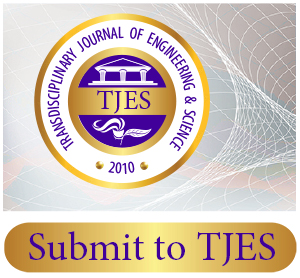| Information |
|---|
| For Readers |
| For Authors |
| For Librarians |
Editorial Workflow
TJES Publication Process
The following is the publication process that every manuscript submitted to this journal undergoes during the course of the peer-review process.
- A manuscript is submitted to the journal.
- The Editor-in-Chief reads the manuscript and determines if it is appropriate and worthy of review.
- The Editor-in-Chief assigns the manuscript to an Associate Editor, who oversees the review process.
- If the Associate Editor finds that the submitted manuscript is of sufficient quality and falls within the scope of the journal, they should assign the manuscript to a number of external reviewers, provided that no conflict of interests exists between the reviewers and the manuscript’s authors.
- The manuscript is reviewed in accordance with the journal publication standards and requirements.
- Based on the reviews report, the Associate Editor makes a recommendation of one of the following actions t to the Editor-in-Chief:Publish unchangedConsider after Major Changes
- Reject
- Consider after Minor Changes
If the Editor recommends “Consider after Minor Changes,” the authors are informed to prepare and submit a final copy of their manuscript with the required minor changes. Once the Editor is satisfied with the suggested minor changes the manuscript will be accepted and the publication process proceeds.
If the Editor recommends “Consider after Major Changes,” the authors are required to revise their manuscript in accordance with that recommendation and re-submit their revised manuscript. If the original reviewers are satisfied with the revised manuscript, reviewers will make recommendation for publication. Otherwise, manuscript will be rejected.
The peer-review process of this journal is single blinded –-peer review keeps the identity of the reviewer anonymous, but the authors name and affiliations are on the manuscript.
Responsibilities of Editor-in-Chief
- An editor-in-chief (Editorial Head) is a publication's primary head. In overseeing the technical content, the Editor is responsible to:
- Determine acceptance or rejection of all materials considered for publication.
- Manage the Associate Editors and oversee their roles and responsibilities in coordinating the review process.
- Maintain commitment to standards of high quality.
- Nominate potential Associate Editors to the TJES Publications Committee for approval.
Responsibilities of Associate Editors
- The primary responsibility of the Associate Editor is to oversee the peer review process of the technical works assigned. Associate Editors are responsible to:
- Ensure the review is completed in a timely manner and in accordance with The TJES publication policy and standards.
- Recommend acceptance or rejection of all materials considered for publication to the journal Editor-in-Chief.
- Maintain active communication with authors and reviewers during the peer review process.
- Solicit invited and review manuscripts which are deemed of benefit to readers of the transdisciplinary community.


